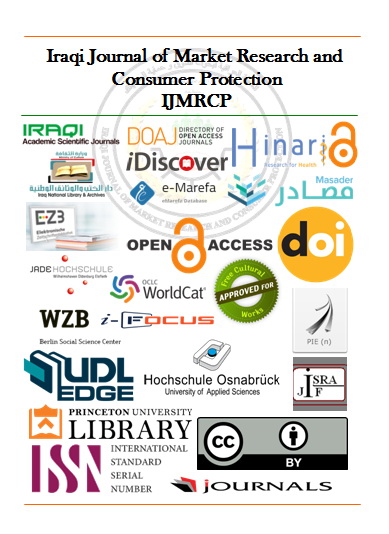DESIGN, SYNTHESIS AND BIOLOGICAL EVALUATION OF MANNICH BASE SOME TRANSITION METAL COMPLEXES
DESIGN, SYNTHESIS AND BIOLOGICAL EVALUATION OF MANNICH BASE SOME TRANSITION METAL COMPLEXES
DOI:
https://doi.org/10.28936/10.28936/(1)jmracpc11.2.2019Keywords:
: Metal complexes, Ciprofloxacin, Mannich base, Anticancer activity.Abstract
The new mannich base ligand and its metal complexes were synthesized in ethanol medium. The mannich base is derived from the condensation reaction of morpholine and Ciprofloxacin (Cp) at room temperature. This ligand and metal complexes were characterized using elemental analysis, FT-IR, UV-Vis, and NMR spectral data, molar conductivity measurements, and melting points. Elemental analysis data show that the metal complexes formed have the general formula[Cr(L)2ClH2O] Cl.H2O, [Pt(L)2Cl2] Cl2.H2O and [Au(L)2]Cl.H2O where mannich base ligand (L) .Based on spectroscopic analytical, coordination with metal ions involves the 'O' donor atoms of carboxylate group, and the Cr(III) and Pt(IV) complexes are a six-coordinated octahedral structure while Au(III) complex is A four-coordinated square planer structure. Molar conductivity of these complexes showed that they were electrolytic in nature. The toxicity of the free ligand and their metal complexes as anticancer agents against MDA-Mb-231 cell lines was examined with different concentration. Anticancer testing revealed that all complexes were more effective than the ligand. The Au (III) complex exhibited the most significant toxicity effect than the other compounds.
Downloads
Published
Issue
Section
License
Copyright (c) 2024 Iraqi Journal of Market Research and Consumer Protection

This work is licensed under a Creative Commons Attribution 4.0 International License.





